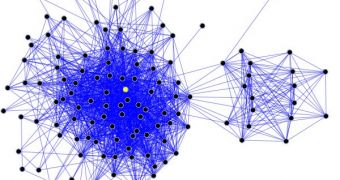According to a new scientific study, it may be that the most influential and well-connected people in social networks are not necessarily the main promoters of a new idea, fashion or behavior. The new conclusion belongs to a research that, like many conducted recently, provided researchers with more insight into how these amazing constructs worked. Studying such networks usually yields very peculiar and counter-intuitive results, which is why so many investigators today are fascinated with them.
For instance, previous investigations determined that some individuals were better connected within the network than others. As a direct consequence, they should be responsible for handling (sending, receiving and promoting) more data than those who had less connections. However, it was recently revealed that these hubs, as they are called, did not necessarily fulfill this function. “In contrast to common belief, the most influential spreaders in a social network do not correspond to the best connected people or to the most central people,” Boston University expert Maksim Kitsak says.
The researcher adds that, though the finding may appear counter-intuitive at first, it makes perfect sense in retrospect. “For example, if a hub exists at the end of a branch at the periphery of a network, it will have a minimal impact in the spreading process through the core of the network,” he explains. “A less connected person who is strategically placed in the core of the network will have a significant effect that leads to dissemination through a large fraction of the population,” he continues, adding that a method known as “k-shell decomposition” was used to enable scientists to determine these influential people.
Next, the team proceeded to test its idea, by applying it to several large networks, including the 5.5 million people that made up the LiveJournal community. What this type of approach does, Technology Review reports, is essentially determine the position of influential individuals with regard to the virus or piece of information being spread through the social network. This line of research is very important, because of its real-life applications. One example of this is using the most influential people in social networks to pass on information, and isolating them in case of a viral epidemic.

 14 DAY TRIAL //
14 DAY TRIAL //